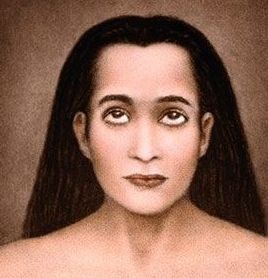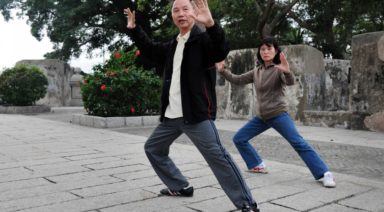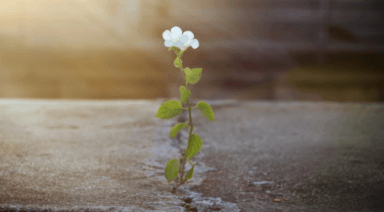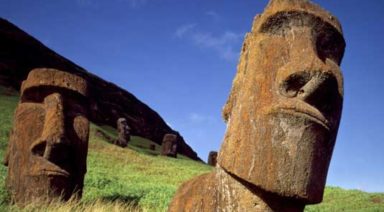Mahavatar Babaji: The Eternal, Holy Master of Kriya Yoga
The most magical, mystery tour imaginable might be a holy trek to the Himalayas, in search of the eternal Kriya Yoga master known as Mahavatar Babaji, or Babaji, an incarnation of Krishna.
It has been recorded that this immortal yogi transferred the ancient Kriya teachings to thousands of initiates, working behind the scenes, and without their conscious knowledge of his transmissions.
Having achieved a high level of spiritual awareness and superpowers, Babaji was and is a great Siddha. Within each of several lives, he overcame a long list of human and spiritual limitations, on his eternal quest to help humanity evolve.
Few have seen the great Kriya master, yet many have claimed that he is the holy Being that gave birth to their devotion and spiritual lineages.
“If you come to doubt, I’ll give you every reason to doubt. If you come suspicious, I’ll give you every reason to be suspicious. But if you come seeking Love, I’ll show you more love than you’ve ever known.”
— Mahavatar Babaji
Mahavatar Babaji’s Quick Ascent
According to ancient legend and tradition, Babaji was born in 203 AD, to two Nambudri Brahmins, in a village known as Parangipettai, in Tamil Nadu, India. Babaji’s father was a Shiva devotee and Hindu priest. Mahavatar Babaji’s birth name was “Nagaraj,” which translates to “Serpent King,” a reference to the energy “snake” of Kundalini.
After being kidnapped and freed at the age of 5, Babaji sought the Kriya Kundalini Pranayama teachings from Agastyar, the revered and holy Vedic sage and scholar of Hinduism. Nagaraj soon moved to Badrinath, where he surrendered his ego and gained initiation into divine service.
Learn more about the history and power of Kriya Yoga
Kriya Yoga Comes Back to Life
In his Yoga Sutras, Patanjali defines Kriya Yoga as, “the constant practice of and cultivation of detachment, self-study, and devotion to the Lord.”

Mahavatar Babaji
Kriya meditation and yoga techniques have been around for thousands of years but were kept a secret to protect their purity. These techniques were utilized by Jesus Christ and his disciples, the Buddha and his followers, and Arjuna, the most powerful archer in history, as noted in the ancient Indian epic, Mahabharata. Arjuna and Krishna’s dialogue is found in the Bhagavad Gita.
Kriya Yoga was reinitiated into the physical world in 1861 when spiritual initiate Lahiri Mahasaya asked Babaji to be his guru. In return, Babaji transmitted to him the ancient and powerful knowledge of Kriya Yoga.
Sri Yukteswar, one of Lahiri’s disciples, requested the Kriya transmission from Mahasaya Lahiri, and it was granted. Paramahansa Yogananda was one of Sri Yukteswar’s disciples, who received the Kriya teachings when he was in his 20’s.
During a meditation in his home, Yogananda sought Babaji for reassurance in his quest to take Kriya Yoga to the West. Babaji appeared to him, gave him the assurance he needed, and then disappeared.
Describing Babaji’s eternal role here on earth, Paramahansa Yogananda wrote, “Babaji is well aware of the trend of modern times, especially of the influence and complexities of Western civilization. He realizes the necessity of spreading the self-liberation of yoga equally in the West and the East.”
Babaji promises to guide all Kriya Yogis on our quest toward liberation.
Mahavatar Babaji’s Home
The small, humble village in the Himalaya Mountains known as Badrinath, in Uttarakhand, India, has long been considered the home of Babaji. The large temple in the town, The Temple of Badrinath, is regarded as an eternal doorway to Babaji, through his prior incarnation, Narayan. Hundreds of thousands of people visit this site every year to chant his name.
Adi Shakira, a late-7th-century philosopher and theologian, and the yogi who consolidated the Advaita Vedanta doctrine is credited with reestablishing Badrinath as a holy site and preeminent stop on any pilgrimage. Adi compiled the main concepts of Vedanta which formed the basis for today’s Hinduism.
Yogis of the Himalayas who wish to connect with Babaji will faithfully pray to Narayan at this magical temple. They chant the names Narayan, Babaji, Krishna, Babaji-Krishna and Babaji-Narayan hoping to receive their blessings.
As noted in the Bhagavata Purana, “There in Badrikashram, the supreme being, in his incarnation as the sages Nara and Narayana, had been undergoing great penance since time immemorial for the welfare of all living entities.”
This is a reminder of a true Yogi’s sadhana in Amma’s (The Hugging Saint’s) mantra, “Lokah Samastah Sukhino Bhavantu,” which translates roughly to, “May all the Beings in all the worlds be happy.”
Babaji Quotes
- “Love is the undisturbed balance that binds this universe together.”
- “The Divine realm extends to the earthly; but the later, illusory in nature, does not contain the essence of Reality.”
- “Even in the world, the yogi who faithfully discharges his responsibilities, without personal motive or attachment, treads the sure path of enlightenment.”
- “Even a little practice of this dharma (through religious rites and righteous action) will save you from great fear, the colossal sufferings inherent in the repeated cycles of birth and death.”
- “For the faults of the many, judge not the whole. Everything on Earth is of mixed character, like a mingling of sand and sugar. Be like the wise ant which seizes only the sugar, and leaves the sand untouched.”
How Do I Invite Mahavatar Babaji to Appear?
As with all eternal masters, they might appear to us when we truly need it. Only they know what our soul requires for liberation. Consider these ideas in your pursuit to merge with the eternal nature of Babaji:
-
If your desire is to be showered with Babaji’s love, chant this mantra for some time, “Om Babaji, Om Babaji, Om Babaji” with a sweet and vulnerable reverence.
-
To experience the essence of a light-being, you might imagine the master’s form and bow to His or Her image. Humbly ask for a blessing by saying, “My heart is open. I am open. Bless me with your light so that I can grow in love.” You might also speak to Babaji as your most treasured friend.
-
Consider these chants to invoke these divine incarnations:
-
- “Om Hreem Kreem Babaji Namaha”
- “Om Kreem Babaji-Narayan Namaha”
- “Om Hreem Narayan, Om Hreem Krishna, Om Hreem Babaji-Krishna Namaha”
-
Some might also chant the Maha Mantra, found in the Upanishads:
-
- “Hare Rama, Hare Rama, Rama, Rama, Hare Hare. Hare Krishna, Hare Krishna, Krishna, Krishna, Hare Hare.”
-
This divine meditation technique might also be of help:
-
- Sit cross-legged on the floor or in a comfortable chair, with your spine straight.
- Take ten very slow and deep breaths, commanding that each breath’s energy fill your body’s cells, organs, and systems with light and love.
- Take another ten breaths, using them to go deeper within yourself so that you can be without thoughts.
- Imagine the physical form of Mahavatar Babaji in front of you. See him at the age of 25, filled with light, copper skin and brown hair, and with rose petals at his feet. Ask Babaji to fill your heart and life with peace and love.
- Consider repeating in your mind, “Mahavatar Babaji, have mercy upon me.” You might also repeat “Mahavatar Babaji” in your mind upon inhaling, and then “have mercy upon me” upon exhale. Use a cadence that opens your heart.
- After some time, say this aloud, “Sitting within the sphere of the divine light of my master Babaji, I am safe, whole, happy and aware. I seek the master’s divine presence, love, blessing, and guidance in my life. I am with you master, forever more.”
- Take ten more breaths and imagine the love of the universe filling your vessel. Pray for a handful of people whom you love. Open your eyes and have a blessed day.
Even if we do not experience visitations of spirit when we seek the eternal light in specific forms, we will undoubtedly receive their essence in the forms of joy, light, love, and peace.
“Whenever anyone utters with reverence the name of Babaji, that devotee attracts an instant spiritual blessing.”
— Paramahansa Yogananda
The Healing Power of Tai Chi and Bone Tapping

Tai Chi Chuan or any Tai Chi is a type of Kung Fu, so at some depth it’s a martial art, but it’s also more than that. It’s a healing art and a meditation in itself that can help one’s balance. It provides a tangible mind/body/spirit connection, as well as a deeper connection with one’s surroundings. It can do wonders for the ailed as well as athletes of all types. It’s also a folk dance (the only way I can fake the ability to dance is by repeating Tai Chi moves).
Tai Chi is a physical art that betters one’s well-being and it’s also a metaphysical art that provides a way to cultivate energy. Tai Chi is all about developing grounding and rooting. Since it is done standing and walking, the meditative nature of Tai Chi is highly applicable and transferable to the rest of our day as we walk and stand around others.
There are four main forms of Tai Chi: Chen, Sun, Yang, and Wu, and there are many different styles within each. No matter how different they are, each contains some of the same practices and entirely the same theories.
In Tai Chi, there is no one superior type of posturing, there are only more dedicated practitioners. The interesting thing about Tai Chi, as opposed to practically everything in the postmodern world, is as long as you keep in mind certain concepts you can’t do it wrong, you can only refine it. In this way, there is constant potential to learn more from the same movement.
In Tai Chi, a couple of movements are just variations of yoga’s warrior poses, only done with less of a deep stretch. And in the form I practice there are a couple of movements that involve brushing oneself, tapping certain body parts and even adding a moderate stomp. In Tai Chi, there is infinite variation and change is good.
Being flexible and accepting of new ways to do things and new forms to do is a big lesson. It’s said that in the long-form there is a variation of every movement possible and there is definitely a reflection of every martial art, healing and internal art.





































